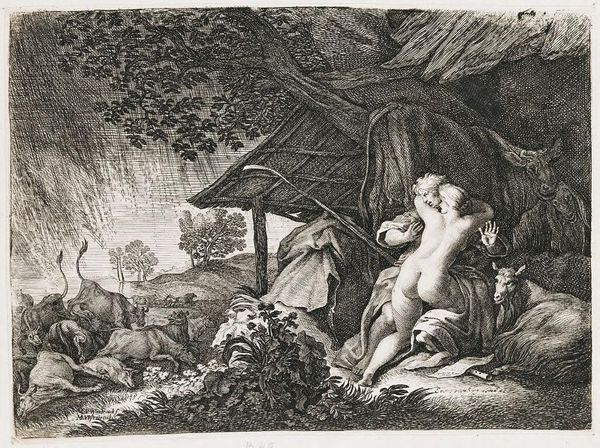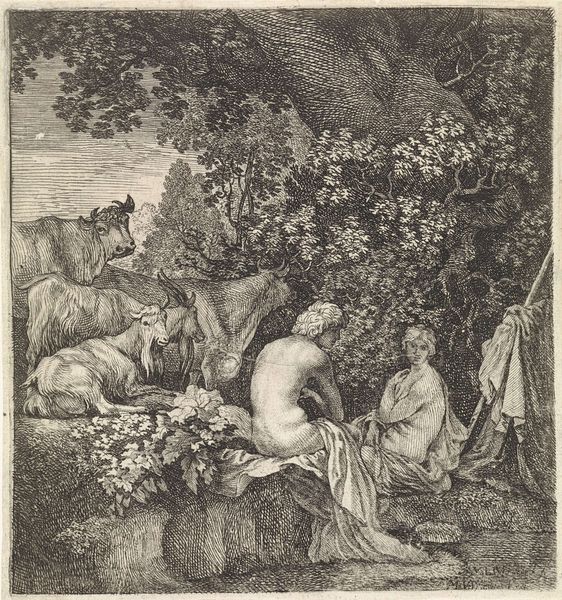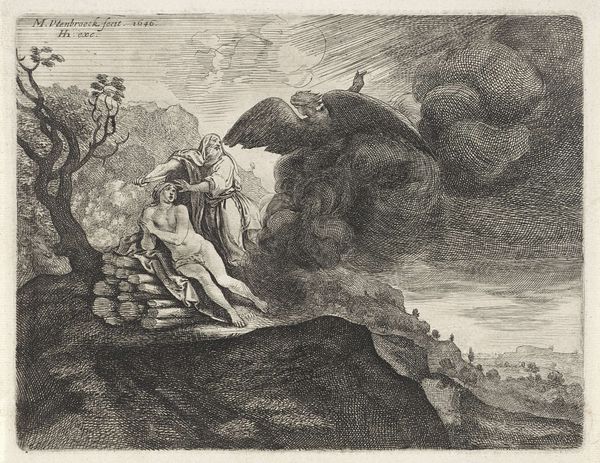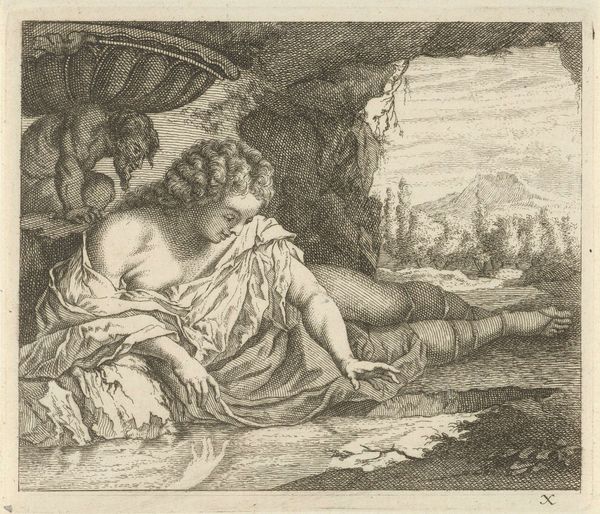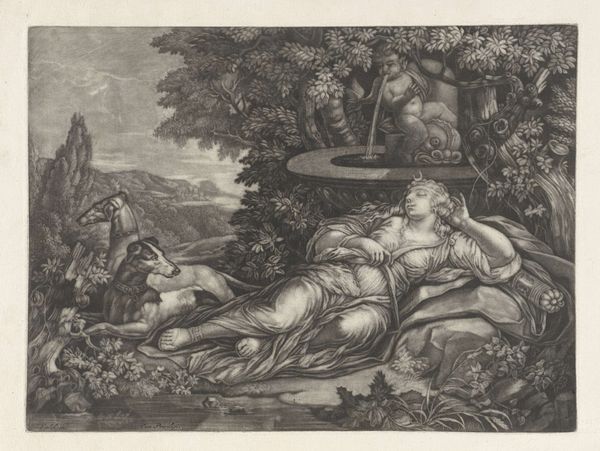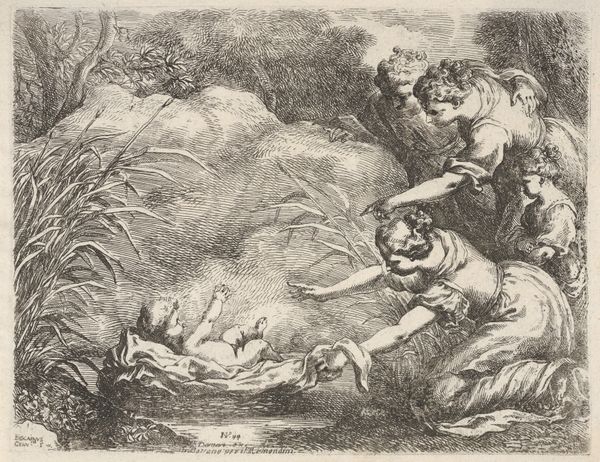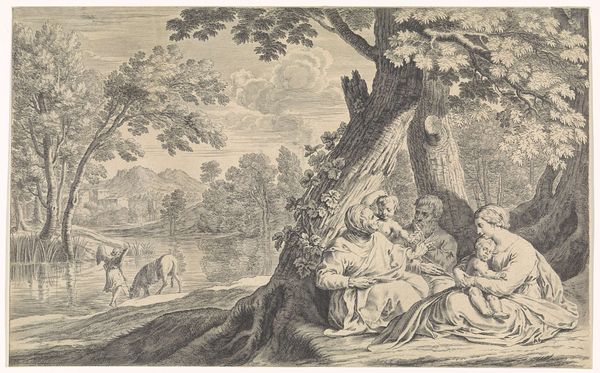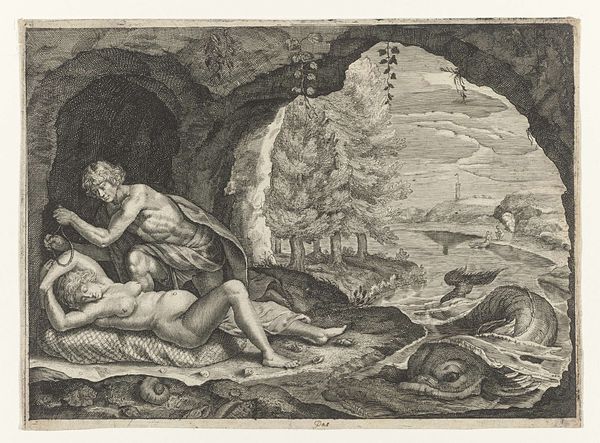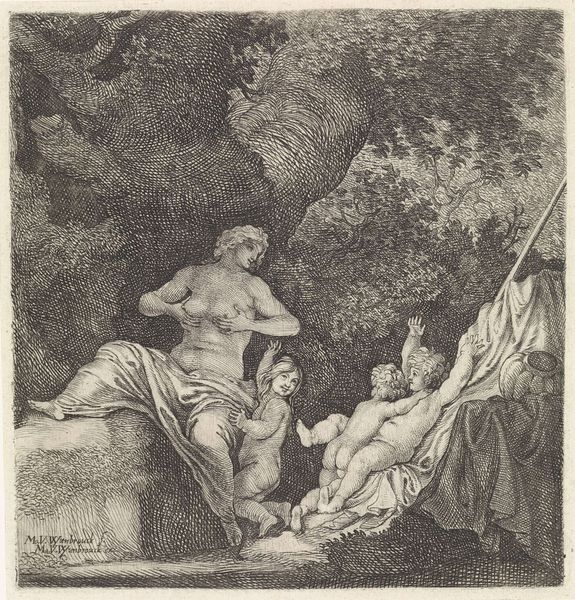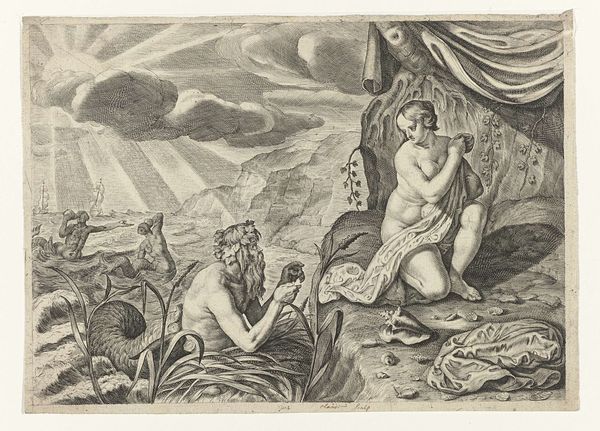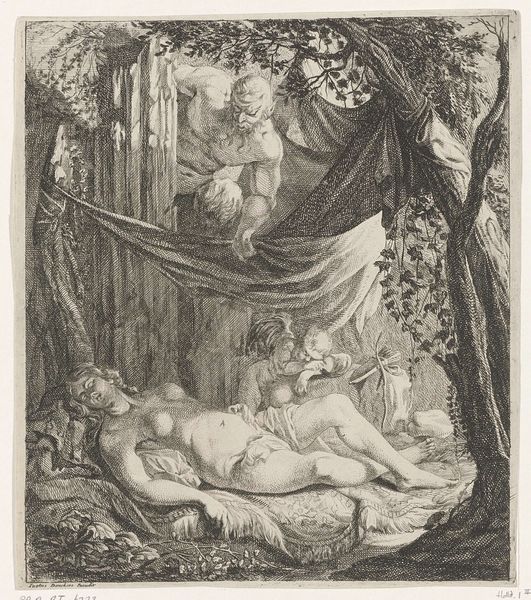
print, etching
#
baroque
# print
#
etching
#
landscape
#
figuration
#
genre-painting
#
nude
Dimensions: height 191 mm, width 257 mm
Copyright: Rijks Museum: Open Domain
Moyses van Wtenbrouck made this etching, Herder en herderin schuilend voor een storm, at an unknown date. It depicts a male and female shepherd taking cover from a storm. But what does this scene tell us about the social and cultural context in which it was made? The image creates meaning through visual codes and historical associations. Wtenbrouck was Dutch. The Dutch Golden Age in the 17th Century was a period of economic prosperity and artistic flourishing. Artists like Wtenbrouck often turned to pastoral themes, idealizing rural life, but this was no simple celebration of the countryside. It was a commentary on the social structures of the time, offering an escape from urban life. The very existence of such art speaks to the increasing urbanization of the Netherlands. To understand this work better, we would need to dig into archives, look at period literature, and study the history of Dutch art institutions. Art always reflects its social and institutional context.
Comments
No comments
Be the first to comment and join the conversation on the ultimate creative platform.
